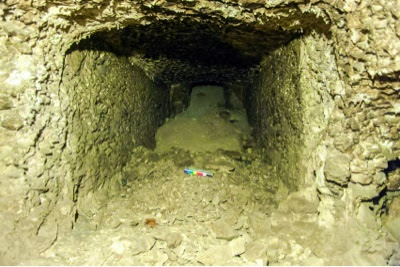Visite au quartier des potiers à Fustat
Eau, terre et feu, font la passion du potier
Les poteries sont toujours là pour parler au cœur de l'homme, lui renvoyer le geste éternel de la main qui modèle, façonne, pétrit et décore. La tradition du travail de la terre se perpétue, en Egypte, grâce à des maîtres potiers ou des céramistes, qui reprennent souvent les techniques ancestrales. Le quartier des potiers au Caire, tout près de Salah Salem (quartier de Fustat), est un centre important de production d'objets en terre cuite et en argile. Découvrez au fil d'une rapide visite des lieux, ces nombreux artisans, leurs ateliers primitifs et les salles d'exposition de leurs produits, qui ne sont que les trottoirs mi-pavés, mi-détruits. Ils créent de nouveaux pots culinaires, des objets décoratifs d'une grande variété, d'inspiration classique et résolument moderne, du même coup.

Plus qu'aucune activité de l'homme, la poterie est conservatrice de la mémoire. Ni le feu où elle est cuite et dont elle est la fille, comme s'expriment ses artisans, ni même l'eau qui a constitué sa matière, avant le feu qui la fixe, n'ont de prise sur elle. C'est le temps qui semble lui donner de la valeur et de la noblesse, là où il corrompt toute autre matière.
De tout temps, l'homme a taillé la pierre. Il l'a empilée en muret ou l'a sculptée. En Egypte, les carrières et les ateliers de poteries sont nombreux, chacun extrayant une qualité et une couleur différente enrichissant ainsi l'offre.
Ils apprécient leur mode de vie
Les potiers, eux-mêmes, disent: "Nos ancêtres ont été les premiers à occuper cette terre dans la capitale", se vantent les vendeurs et les artisans des lieux. Leur bonheur et leur plaisir à pratiquer leur mode de vie, même si tout leur corps est couvert de blanc des effets du travail de calcaire, ou même si leurs mains sont salies d'agile et de pâtes qu'ils modèlent et façonnent, à tout gré, pour former de différentes pièces, ils apprécient leur mode de vie.
Ils se plaignent désormais de mener une vie isolée presque de tout dans la société. "Nous vivons éloignés du reste de la population, car on nous juge comme pollueurs et ainsi on nous confère un regard de dédain", déplore Ragab, un jeune potier qui étalait ces produits sur la rue. Et son patron Chawki de continuer, sur un ton navré: "Ils viennent et apprécient nos produits et les achètent à tout prix, pourtant, ils se contentent de nous payer l'argent puis s'éloignent rapidement comme si nous étions une espèce de fléau."
“La pâte est ma vie”
Pépé Mahrous, est le cheikh des potiers, conçoit ce métier d'une vision très spirituelle, nous laissant admirer la philosophie quand elle sort spontanément des simples. "La pâte est dans mes mains, je la manie et façonne, et je me creuse la cervelle pour faire sortir toutes mes potentialités créatives, afin de présenter un produit admirable, mais toutes ces capacités s'évanouissent devant celles de Dieu qui nous a créés tous à partir de cette même terre… Que Dieu est grand !", s'exclame Pépé Mahrous avec une totale obédience.

Pépé Mahrous, ou cheikh des potiers, comme tient-il à se faire appeler, vit dans le quartier et exerce ce métier depuis des dizaines d'années. "C'est un métier ancestral, que nous avons hérité de père en fils (…) Au début nous étions plus appréciés, mais voilà, tout comme chaque métier artisanal, nous sommes menacés de disparition, face au tapage et au bouillonnement de la vie moderne et de son évolution qui gagne tout et qui menace l'art et la créativité", se plaint-il.
En tenant en main la pâte, vous la contemplez et lui parlez
Le fameux potier parle avec amour de son métier, mais regrette qu'elle soit marginalisée et oubliée. "En tenant en main la pâte, vous la contemplez et lui parlez, comme si l'on parlait à un être humain", dit fièrement Pépé Mahrous. Ce sexagénaire, au visage brun et aux mains durs - tant par l'âge que les longues années durant lesquelles il façonnait l'argile - se vante d'avoir quatre enfants, à qui il a appris le métier. "C'est le plus précieux héritage que je peux leur léguer (…) ils sont tous diplômés, mais ont préféré travailler avec moi", fait-il remarquer.
Faire aimer le métier
aux enfants
Puis il ajoute fièrement: "Mon cadet, Nader, est le plus attaché au métier. Il est marié et a trois enfants. Il a pensé comment faire aimer ce métier à ses enfants, eux qui sont des écoles de langues et qui vivent à l’ère de l'internet. C'est pourquoi, il eut l'idée de faire une sortie pour les élèves de l'école pour visiter le quartier des potiers (…) c'est au cours de cette sortie de divertissement que les enfants ont eu la chance de toucher la terre et de la modeler, puis ont fait des décorations et des dessins là-dessus, et c'est ainsi qu'ils ont aimé ce qu'ils ont fait et intelligemment Nader a réussi à faire aimer ce métier autant à ses enfants qu'aux autres", raconte Pépé Mahrous. Dans la région de Fustat, détonne le quartier des potiers. Dans cet endroit a été créé un centre conjointement par les autorités égyptiennes et le ministère italien des Affaires étrangères, afin de promouvoir l'art de la poterie et d'offrir une vitrine de cet art aux touristes.
www.egyptraveluxe.com
info@egyptraveluxe.com
















